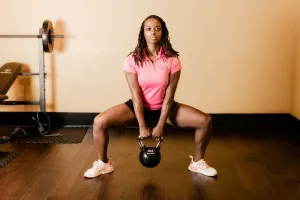Physical fitness is crucial for children with disabilities as it promotes overall health, improves motor skills, boosts self-confidence, and enhances social interaction. Children with disabilities often face barriers to physical activity, such as limited access to inclusive facilities and lack of adapted equipment. However, with the right strategies and support, they can engage in various forms of exercise to stay healthy and active. Regular physical activity can also help manage weight, improve cardiovascular health, and enhance mental well-being in children with disabilities, contributing to their overall quality of life.
Creating an Inclusive Environment for Physical Activity
Creating an inclusive environment means thinking beyond just the physical space. It’s about fostering a community where children of all abilities feel welcomed and encouraged to participate. Here are some practical ways to create this environment:
- Designing Inclusive Playgrounds: Incorporate ramps, sensory-friendly paths, and tactile elements in playgrounds to cater to children with various disabilities. For instance, using rubber flooring instead of wood chips can accommodate wheelchair users.
- Accessible Fitness Facilities: Gyms and sports complexes should have wide doorways, elevators, and adaptive equipment like hand cycles and seated elliptical machines. This ensures that children with mobility impairments can exercise with ease.
- Training Staff and Volunteers: Educate staff and volunteers on how to interact and assist children with different needs. Training can include communication techniques for non-verbal children or how to safely transfer a child from a wheelchair.
Implementing Individualized Fitness Plans
An individualized fitness plan is like a roadmap that guides a child towards their fitness goals. Here’s how to develop and implement these plans effectively:
- Assessment and Consultation: Start with a thorough assessment by healthcare professionals to understand the child’s physical capabilities and limitations. This might involve consulting with pediatricians, physiotherapists, and even psychologists to get a comprehensive view of the child’s needs.
- Setting Realistic Goals: Goals should be specific, measurable, achievable, relevant, and time-bound (SMART). For example, a goal could be to improve endurance by increasing the duration a child can spend on the treadmill by 5 minutes over a month.
- Monitoring Progress: Keep track of improvements and setbacks. Use fitness trackers or regular check-ins to assess progress. Adjust the fitness plan as needed based on these observations.
Utilizing Adaptive Sports and Recreation Programs
Adaptive sports provide a sense of belonging and accomplishment for children with disabilities. Here are some programs and tips to get started:
- Explore Local Programs: Many communities offer adaptive sports programs. Research local opportunities in sports like wheelchair tennis, adaptive sailing, or boccia. These activities not only promote fitness but also teach valuable life skills such as teamwork and perseverance.
- Create Community Events: Organize inclusive sports days where children of all abilities can participate in various activities. These events can highlight adaptive sports and encourage community involvement.
- Pair with Mentors: Connect children with disabilities to mentors who have similar experiences. These mentors can provide motivation, share personal success stories, and offer guidance on overcoming challenges in sports.
Collaborating with Healthcare Professionals and Therapists
Collaboration with experts ensures that fitness activities are safe and effective. Here’s how to work closely with healthcare professionals:
- Regular Check-ups and Feedback: Schedule routine check-ups with healthcare providers to discuss the child’s progress and any concerns. This helps in making informed decisions about their fitness regimen.
- Therapeutic Interventions: Incorporate exercises recommended by physical or occupational therapists. For example, a therapist might suggest aquatic therapy for a child with joint pain, as the buoyancy of water can reduce stress on the body.
- Safety Considerations: Always prioritize safety by ensuring that exercises are supervised and that emergency protocols are in place. For instance, have a plan for managing seizures if the child has epilepsy.
Encouraging Family and Peer Support
Family and peer support can significantly impact a child’s willingness to engage in physical activity. Here are ways to nurture this support system:
- Family Fitness Challenges: Create fun fitness challenges that the whole family can participate in, like a weekend step-count competition or family yoga sessions. This not only promotes fitness but also strengthens family bonds.
- Inclusive School Programs: Advocate for inclusive physical education programs at schools. This can involve modifying games so all students can participate, such as using larger balls or adapting rules to ensure everyone is engaged.
- Peer Buddies: Encourage schools or clubs to implement peer buddy systems where children are paired with peers who provide companionship and motivation. These relationships can enhance social skills and reduce feelings of isolation.
Addressing Common Barriers to Physical Activity
Understanding and addressing barriers can help create more opportunities for children with disabilities:
- Transportation Challenges: Many families struggle with transporting their child to and from activities. Solutions can include advocating for accessible public transport or organizing carpools with other families.
- Financial Constraints: Adaptive sports programs can be expensive. Look into grants, scholarships, or sponsorships available for children with disabilities to help offset costs.
- Awareness and Stigma: Combat stigma by raising awareness about the capabilities and achievements of children with disabilities. Share success stories in newsletters or local media to inspire others and promote inclusivity.
Leveraging Technology for Fitness
Technology can be a powerful tool in promoting physical fitness among children with disabilities:
- Fitness Apps and Devices: Use apps designed for children with disabilities, which offer adaptive exercise routines and track progress. Devices like heart rate monitors can also provide valuable data to tailor fitness plans.
- Virtual Reality (VR) Workouts: VR can offer immersive experiences that engage children in physical activities in a fun and interactive way. For instance, VR games can simulate environments where children can move and explore without physical barriers.
- Online Communities and Support Groups: Join online forums and social media groups where parents and caregivers share tips, resources, and support related to adaptive fitness activities.
Promoting Long-term Engagement and Motivation
Maintaining long-term motivation can be challenging but rewarding. Here are some strategies to keep children engaged:
- Celebrate Milestones: Recognize and celebrate achievements, no matter how small. This could be done through a simple certificate or a family celebration acknowledging the child’s efforts and progress.
- Incorporate Interests: Tailor activities to align with the child’s interests. If a child loves music, consider dance-based workouts. If they’re interested in animals, activities like horseback riding can be both therapeutic and enjoyable.
- Variety and Fun: Keep activities varied and fun to prevent boredom. Rotate different sports and exercises regularly to maintain interest and motivation.
Fostering Emotional and Mental Well-being Through Fitness
Physical activity is not just about physical health; it’s deeply connected to emotional and mental well-being:
- Building Confidence and Self-esteem: Success in physical activities can boost a child’s confidence. Encourage participation in activities where they can excel and feel a sense of accomplishment.
- Stress Reduction and Relaxation: Activities like yoga or tai chi can help in reducing stress and promoting relaxation. These activities are particularly beneficial for children with anxiety or sensory processing disorders.
- Social Interaction and Friendships: Physical activities offer opportunities for socializing and making new friends. Encourage participation in group activities where children can interact and form connections with others who share similar interests.
Conclusion
Encouraging physical fitness in children with disabilities requires a multifaceted approach that includes creating inclusive environments, developing individualized fitness plans, and fostering strong support networks. By addressing barriers and leveraging available resources, we can help these children enjoy the myriad benefits of physical activity, ultimately enhancing their quality of life. Through patience, creativity, and collaboration, we can build a world where every child, regardless of ability, can find joy and fulfillment in an active lifestyle.



